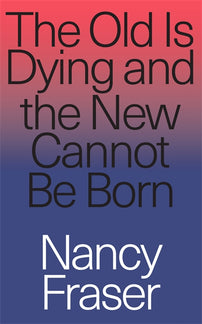In 2016, both major political blocs appeared to collapse
On both sides the usual scripts were upended, as a pair of outsiders occupied the hegemonic gap and proceeded to fill it with new political memes.

All books are 40% off as part of our Student Reading Sale. Ends September 30 at 11:59PM EST. See all our student reading lists here.
[book-strip index="1" style="buy"]The political universe that Trump upended was highly restrictive. It was built around the opposition between two versions of neoliberalism, distinguished chiefly on the axis of recognition. Granted, one could choose between multiculturalism and ethnonationalism. But one was stuck, either way, with financialization and deindustrialization. With the menu limited to progressive and reactionary neoliberalism, there was no force to oppose the decimation of working-class and middle-class standards of living. Anti-neoliberal projects were severely marginalized, if not simply excluded from the public sphere. That left a sizable segment of the US electorate—victims of financialization and corporate globalization—without a natural political home. Given that neither of the two major blocs spoke for them, there was a gap in the American political universe: an empty, unoccupied zone where anti-neoliberal, pro-working-family politics might have taken root. Given the accelerating pace of deindustrialization; the proliferation of precarious, low-wage McJobs; the rise of predatory debt; and the consequent decline in living standards for the bottom two-thirds of Americans, it was only a matter of time before someone would fill the gap.
Some assumed that the moment had arrived in 2007 and 2008. A world still reeling from one of the worst foreign-policy disasters in US history was being forced to confront the worst financial crisis since the Great Depression—and a near meltdown of the global economy. Politics as usual fell by the wayside. An African American who spoke of “hope” and “change” ascended to the presidency, vowing to transform not just policy but also the entire “mindset” of American politics. Barack Obama might have seized the opportunity to mobilize mass support for a major shift away from neoliberalism, even in the face of congressional opposition. Instead, he entrusted the economy to the very Wall Street forces that had nearly wrecked it. Defining the goal as “recovery” (as opposed to structural reform), Obama lavished enormous cash bailouts on banks that were “too big to fail” but failed to do anything remotely comparable for their victims: the 10 million Americans who lost their homes to foreclosure during the crisis. The exception that proved the rule was his expansion of Medicaid through the Affordable Care Act, which provided a real material benefit to a portion of the US working class. Unlike the single-payer and public-option proposals that Obama renounced even before healthcare negotiations began, his approach reinforced the very divisions within the working class that would eventually prove so politically fateful. All told, the overwhelming thrust of his presidency was to maintain the progressive-neoliberal status quo, despite its declining popularity.
Another chance to fill the hegemonic gap arrived in 2011, with the eruption of Occupy Wall Street. Tired of waiting for redress from the political system and resolving to take matters into its own hands, a segment of civil society seized public squares throughout the country in the name of the “99 percent.” Denouncing a system that pillages the vast majority to enrich the top 1 percent, relatively small groups of youthful protesters soon attracted broad support—up to 60 percent of the American people, according to some polls—especially from besieged unions, indebted students, struggling middle-class families and the growing “precariat.”
Occupy’s political effects were contained, however, serving chiefly to reelect Obama in 2012. By adopting the movement’s rhetoric, he garnered support from many who would go on to vote for Trump in 2016. Having defeated Romney and won himself four more years, however, the president continued on his neoliberal path, his newfound class consciousness swiftly evaporating. Confining his pursuit of “change” to issuing executive orders, he neither prosecuted the malefactors of wealth nor used his bully pulpit to rally the American people against Wall Street.
Assuming the storm had passed, the US political classes barely missed a beat. Continuing to uphold the neoliberal consensus, they failed to see in Occupy the first rumblings of an earthquake. That earthquake finally struck in the 2015–16 election season, as long-simmering discontent suddenly shapeshifted into a full-bore crisis of political authority. Both major political blocs appeared to collapse. On the Republican side, Trump, campaigning on populist themes, handily defeated (as he continues to remind us) his sixteen hapless primary rivals, including several who had been handpicked by party bosses and major donors. On the Democratic side, Bernie Sanders, a self-proclaimed democratic socialist, mounted a surprisingly serious challenge to Obama’s anointed successor, Hillary Clinton, who had to deploy every trick and lever of party power to stave him off. On both sides the usual scripts were upended, as a pair of outsiders occupied the hegemonic gap and proceeded to fill it with new political memes.

